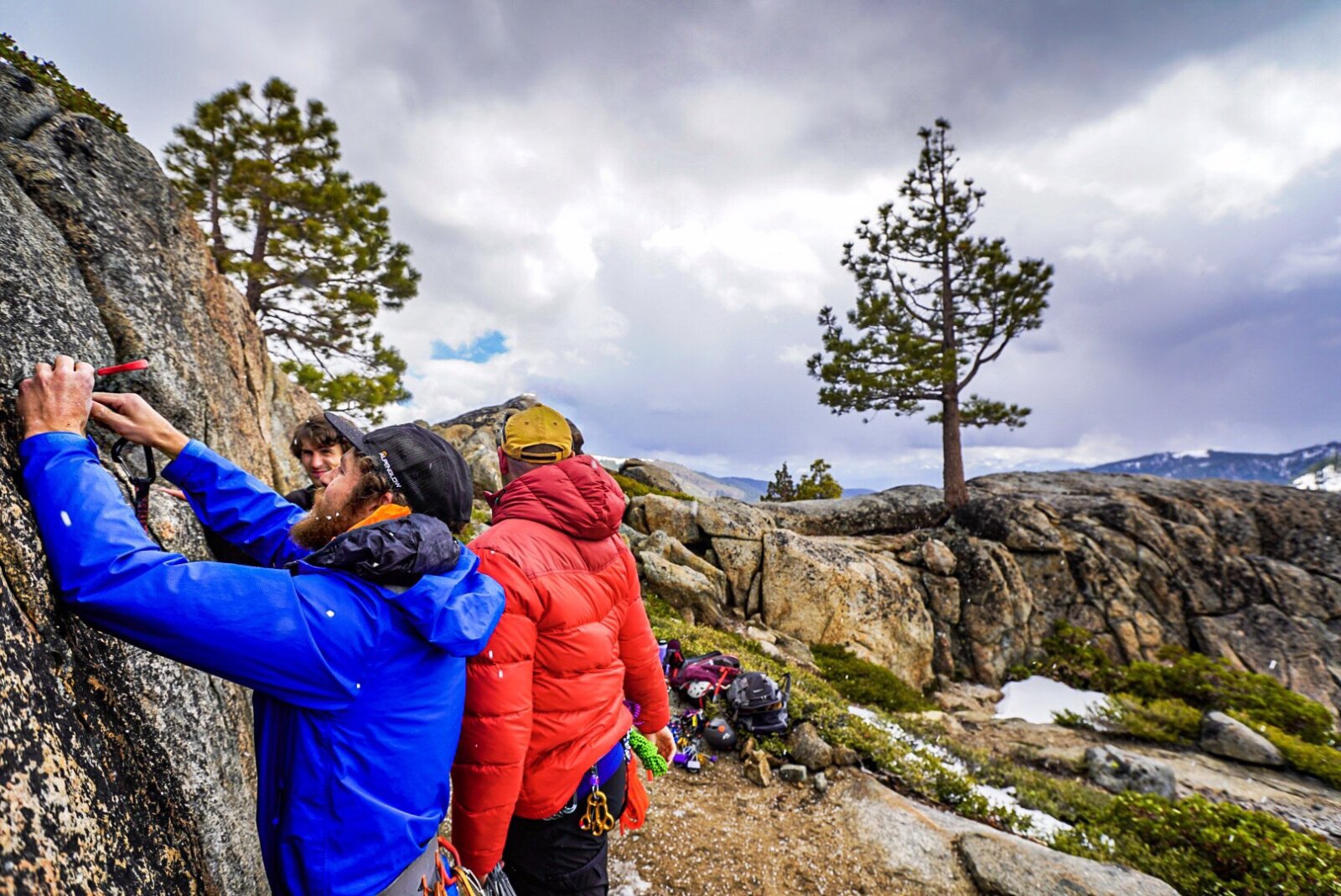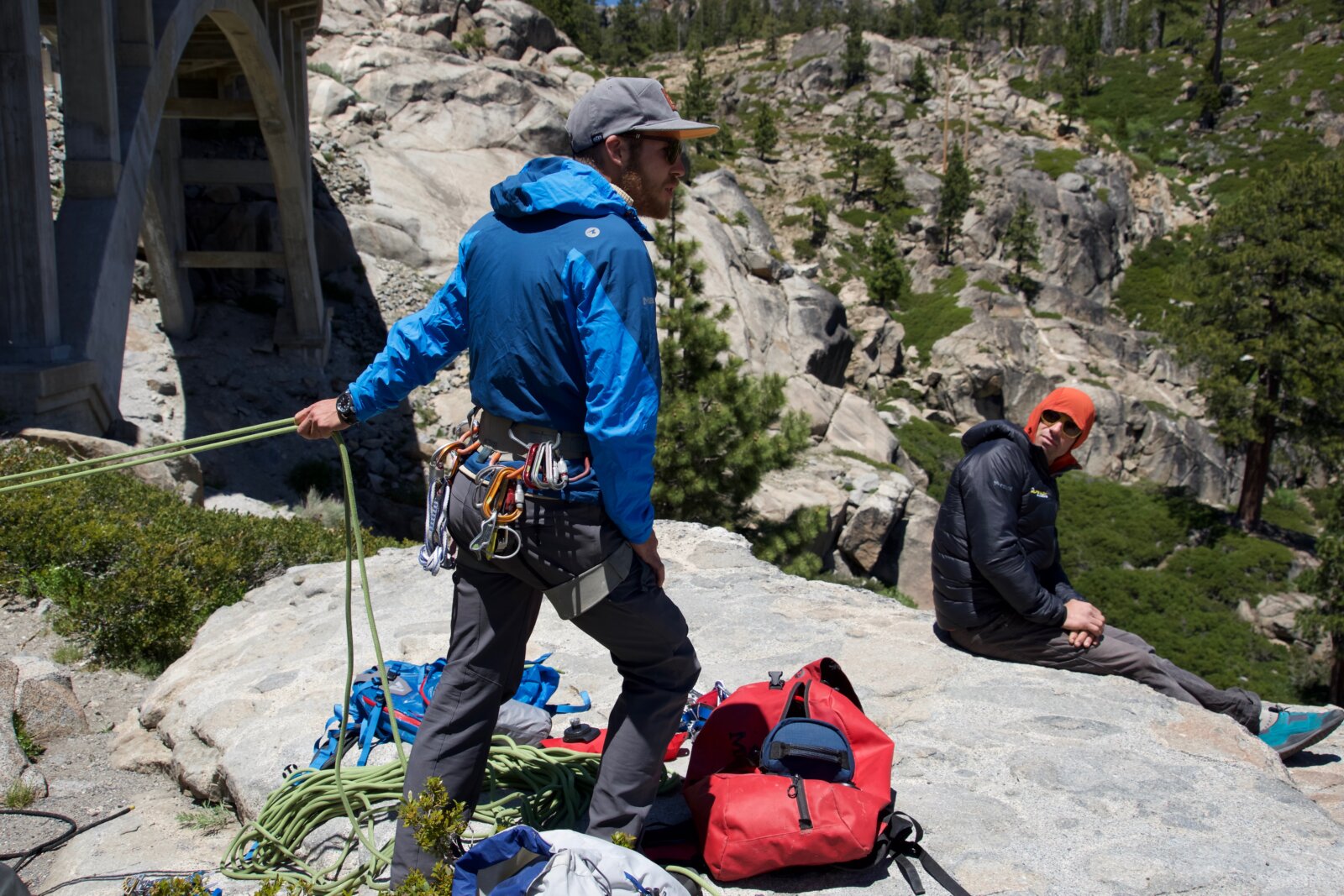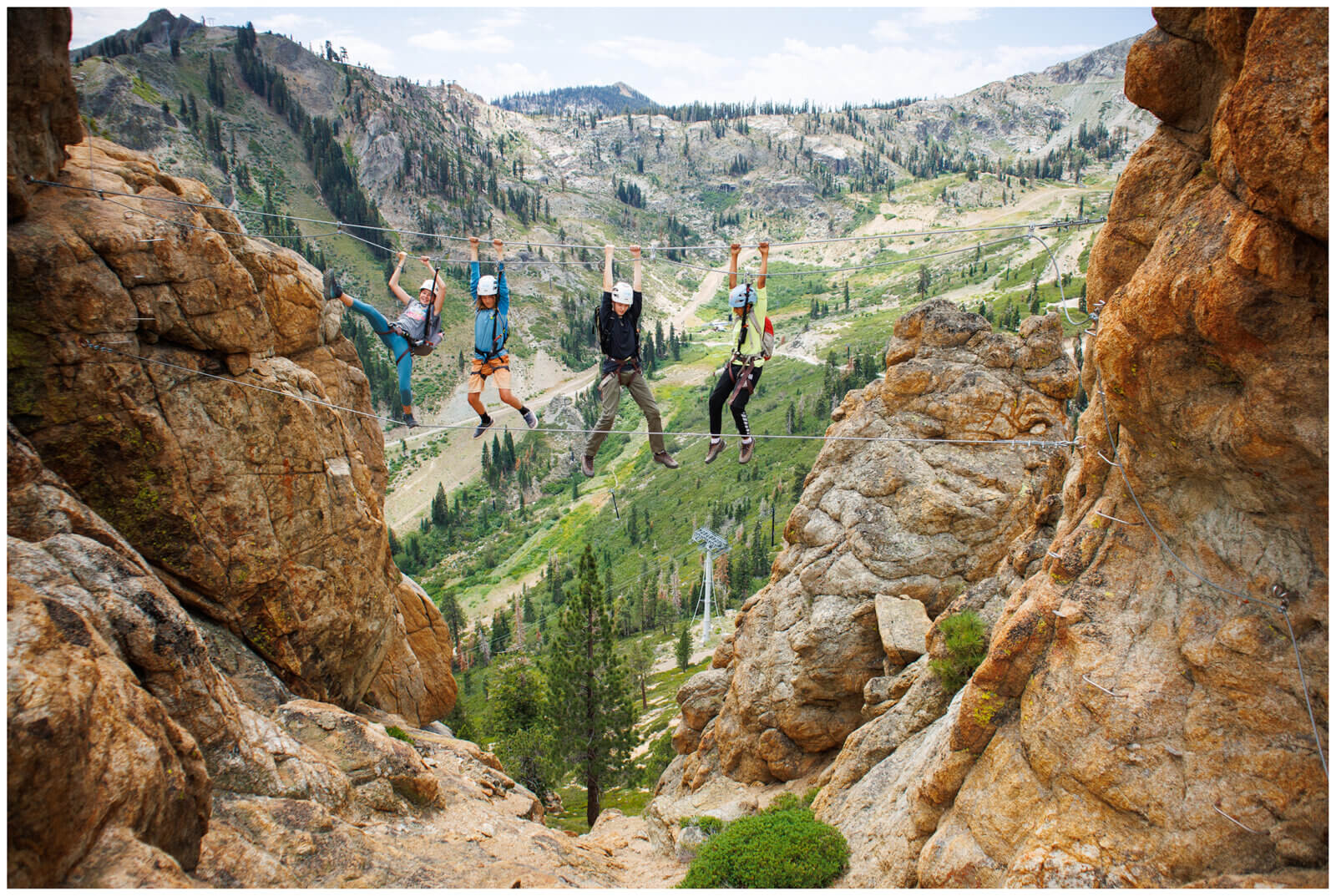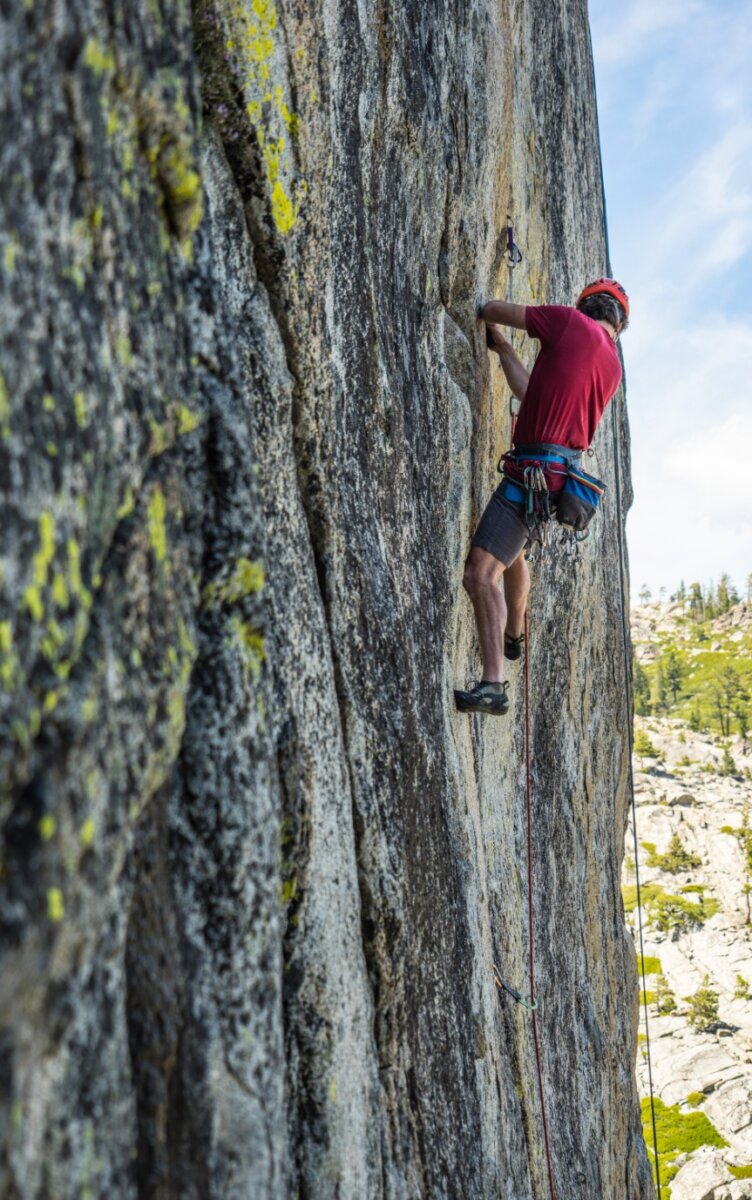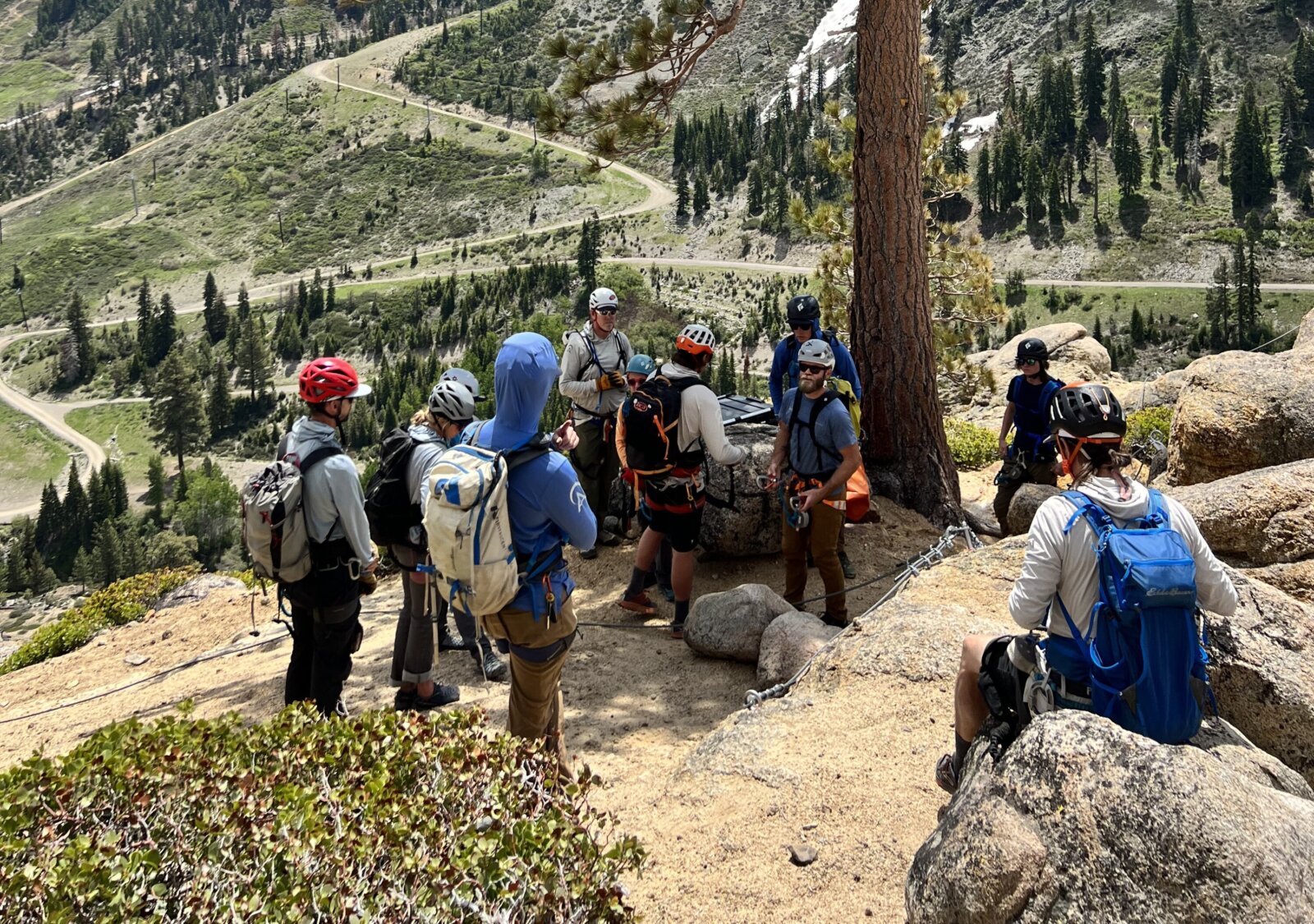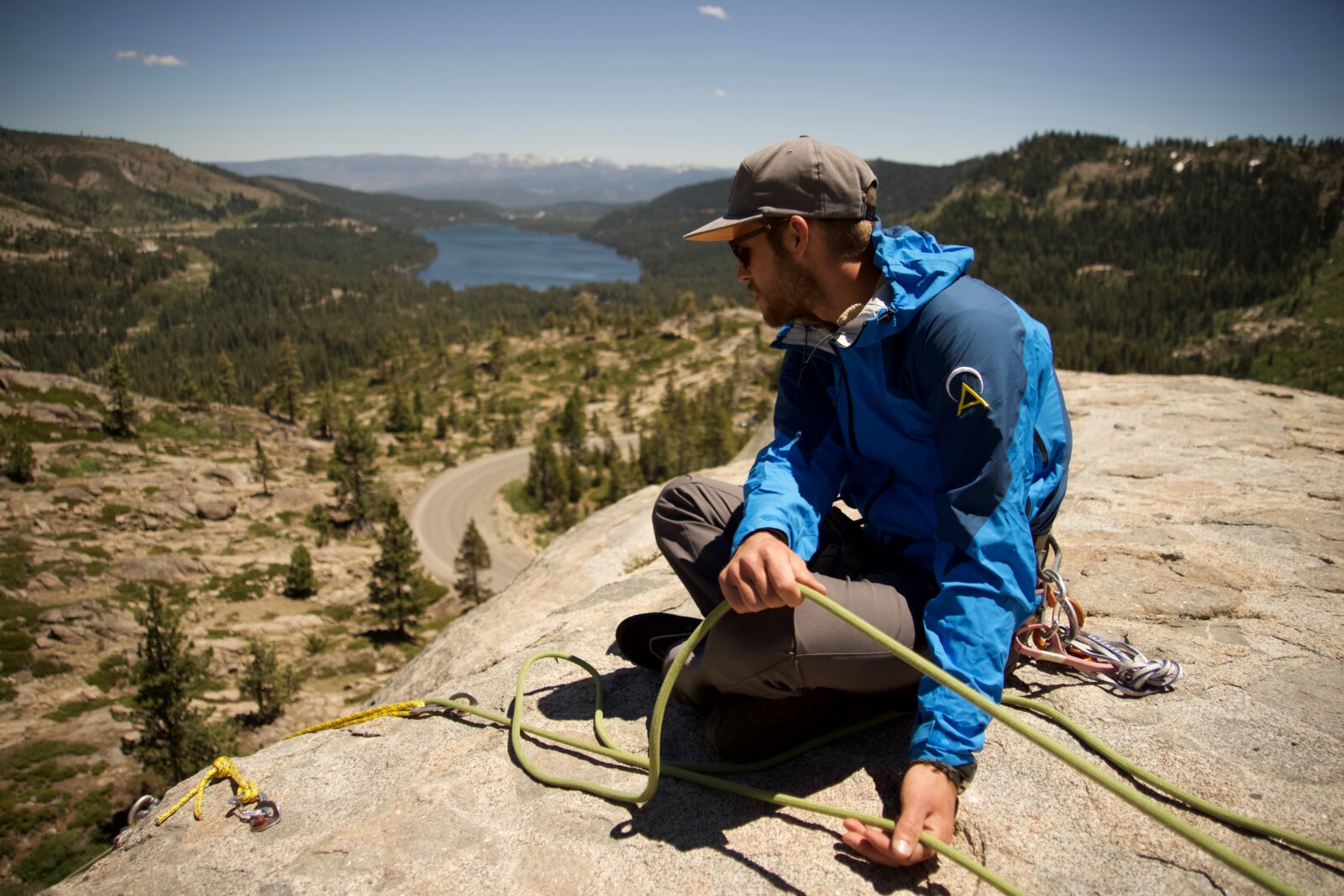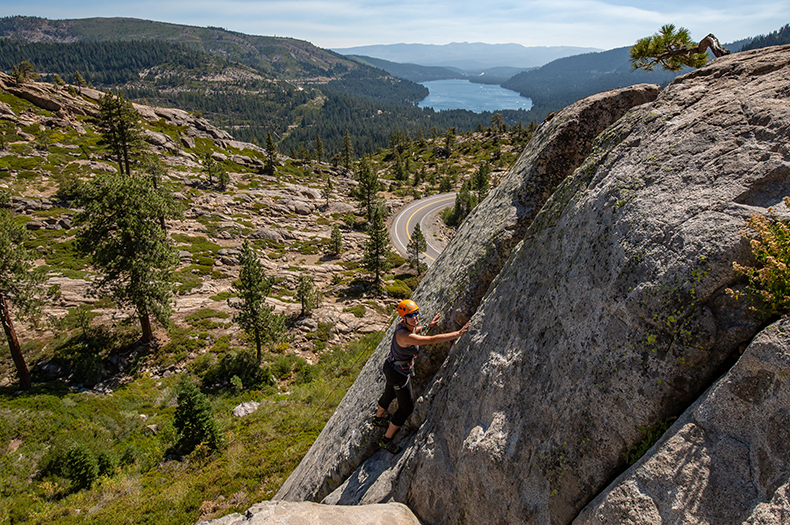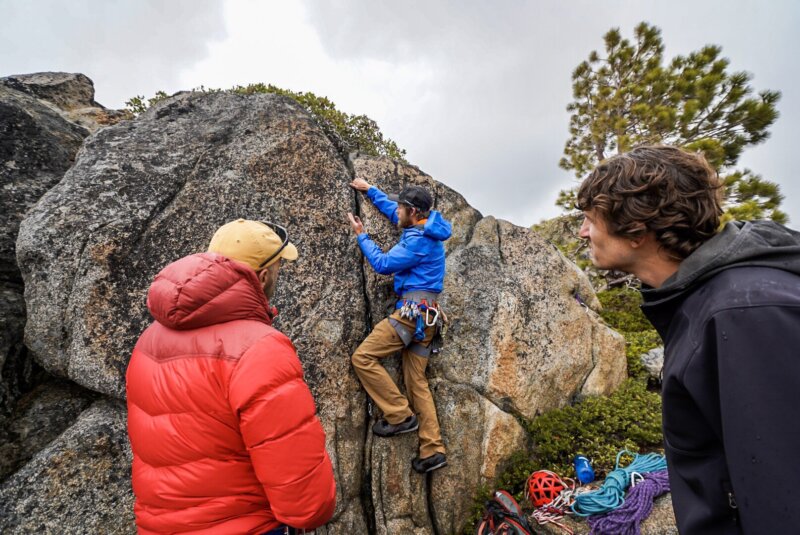Indoor vs. Outdoor Climbing: What are the differences?
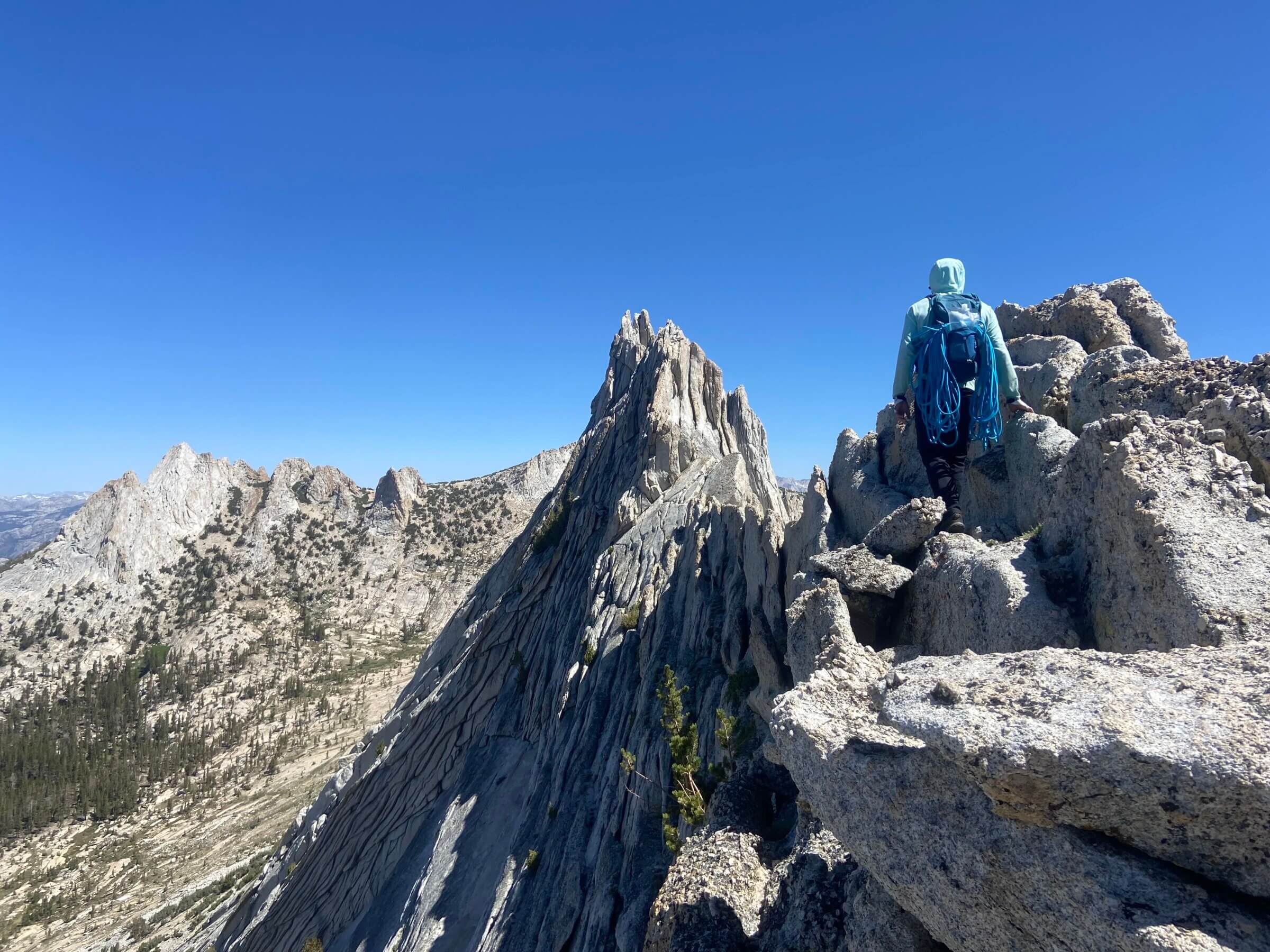
Indoor and outdoor rock climbing have several key differences, each offering unique challenges and experiences. If you’re an indoor climber looking to make the jump outside, consider hiring a guide and enrolling in one of our outdoor rock courses:
Environment
Indoor Rock Climbing:
Controlled Environment: Indoor climbing gyms provide a controlled and predictable environment. Weather, temperature, and lighting are consistent.
Man-Made Walls: Climbing walls are constructed from materials like plywood or fiberglass and have pre-set routes with artificial holds.
Safety Features: Padded flooring, auto-belay systems, and closely spaced bolts and anchors enhance safety.
Outdoor Rock Climbing:
Natural Environment: Climbers face varying weather conditions, temperatures, and natural lighting. Rock types can include granite, sandstone, limestone, etc.
Natural Formations: Routes are formed by natural rock features, offering a diverse range of holds and textures.
Variable Safety: Protection is more variable, relying on natural features for placing gear. The terrain can include loose rock, vegetation, and wildlife.
Skills and Techniques
Indoor Rock Climbing:
Consistent Routes: Routes are clearly marked and graded, allowing climbers to practice specific techniques.
Frequent Route Changes: Gyms often change routes, providing variety and new challenges.
Focus on Strength and Technique: Climbers can focus on improving strength, technique, and specific movements without external distractions.
Outdoor Rock Climbing:
Route Finding: Climbers must identify routes, holds, and protection points themselves.
Adaptability: Requires adaptability to varying rock types, weather conditions, and natural obstacles.
Additional Skills: Outdoor climbing often involves skills like anchor building, placing protection, and understanding natural hazards.
Accessibility and Convenience
Indoor Rock Climbing:
Convenient Location: Climbing gyms are often located in urban areas, making them easily accessible.
Year-Round Access: Climbers can practice regardless of weather conditions.
Beginner Friendly: Gyms often offer classes, rentals, and staff support for beginners.
Outdoor Rock Climbing:
Travel Required: Reaching climbing areas often requires travel, sometimes to remote locations.
Seasonal Access: Climbing can be restricted by weather conditions and seasonality.
Self-Sufficiency: Climbers need to be self-reliant, bringing their own gear and understanding outdoor ethics and safety.
Social and Community Aspect
Indoor Rock Climbing:
Community Hub: Gyms serve as social hubs for climbers, offering group events, competitions, and classes.
Structured Activities: Many gyms offer structured activities like yoga classes, fitness training, and kids’ programs.
Outdoor Rock Climbing:
Shared Experience: Climbing with partners in nature fosters a strong sense of camaraderie.
Climbing Culture: Outdoor climbing often has a deeper connection to the climbing community and traditions.
Both indoor and outdoor rock climbing offer unique experiences and challenges. Indoor climbing is ideal for training, convenience, and social interaction, while outdoor climbing provides a connection to nature, adventure, and a broader range of skills. Many climbers enjoy both, using indoor climbing to train for and complement their outdoor adventures.
Thinking about making the transition from indoor to outdoor? Consider a Private Rock Day or take one of our courses with a certified guide.
